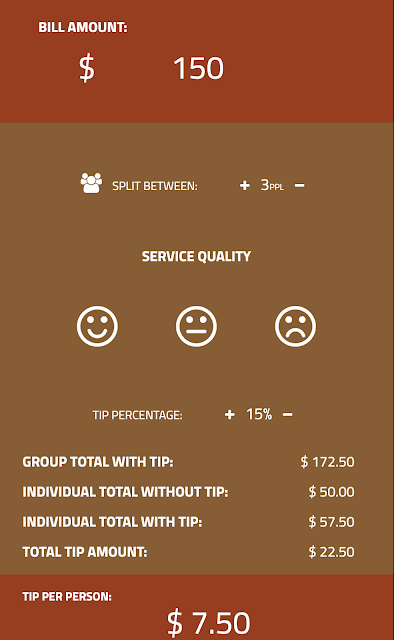Tipping is a customary practice in many countries, but the expectations and norms surrounding it can vary significantly. While tipping is often seen as a way to show appreciation for good service, the amounts, customs, and even whether or not tipping is expected at all can differ greatly depending on where you are. Here’s a look at tipping culture across different parts of the world:
North America: The Land of The Tip
In the United States and Canada, tipping is deeply ingrained in the service industry. In restaurants, it’s common to leave a tip between 15-20% of the total bill.
Waitstaff in many U.S. restaurants and cafes are paid a low wage, often below minimum wage, with the expectation that tips will make up the difference. Tipping is also customary for bartenders, taxi drivers, hairdressers, and hotel staff. Canadians follow similar norms, though tipping tends to be slightly less obligatory than in the U.S. If you are interested in tipping culture, check out this article on tipping culture in the US which will give you a more in-depth insight. It has been known for US waiters to chase people who do not leave an adequate tip!
Europe: It Varies
Tipping practices across Europe vary widely. In countries like France and Italy, a service charge is often included in the bill, and while leaving small tips for good service (usually rounding up the bill or leaving some change) is appreciated, it’s not required. In Germany and Austria, it’s common to round up the bill to the nearest euro or add 5-10%, but it’s not expected to tip as generously as in the U.S.
In the UK, tipping around 10-15% is customary in restaurants, but many places now include a service charge in the bill, making additional tipping optional. Many in the UK will only tip for an evening meal and not lunch. For other services like taxis or haircuts, rounding up the fare or leaving a small tip is common.
Asia: A Mixed Bag

Asia presents a wide range of tipping customs, from countries where tipping is expected to those where it can even be considered rude.
Japan: Tipping is generally not practised, and can even be seen as offensive. Excellent service is simply part of the job, and tipping can create confusion. In formal settings, if you do feel the need to give a tip, it should be placed in an envelope and given discreetly.
China: Similar to Japan, tipping is uncommon and can be seen as strange. However, in areas with more tourists, such as Hong Kong, tipping is more accepted, and service charges are often added in hotels and restaurants.
India: Tipping is widely expected, especially in restaurants, where 10-15% is the norm. Tipping is also common for taxi drivers, hotel staff, and guides, and rounding up small amounts is often appreciated.
Southeast Asia: In countries like Thailand and Vietnam, tipping isn’t mandatory, but it’s appreciated in tourist areas or higher-end establishments. Leaving small amounts for waitstaff or hotel workers is common.
Middle East: Generous Giving
In the Middle East, tipping, or “baksheesh,” is widely practised, and often expected. In countries like Egypt and Turkey, tipping is common for a wide range of services, from restaurant staff to tour guides, and tipping around 10-15% is customary. Hotel staff, porters, and drivers may also expect tips.
In Dubai and other parts of the UAE, a service charge is often included in restaurant bills, but it’s still common to leave an extra tip of around 10% for good service. Tipping taxi drivers, hotel staff, and other service workers is also appreciated.
Africa: A Case-by-Case
Tipping in Africa can vary depending on the region and level of tourism. In countries like South Africa, tipping is expected, especially in restaurants, where a 10-15% tip is the norm. Safari guides, porters, and hotel staff are also commonly tipped. In contrast, in less touristy or rural parts of Africa, tipping may be less common or even confusing.
Latin America: Regional Differences

Tipping culture in Latin America also varies from country to country.
Mexico: Tipping is widely expected in Mexico, with 10-15% being the standard in restaurants. Hotel workers, taxi drivers, and bartenders also generally expect tips.
Brazil: A service charge is often included in restaurant bills, so additional tipping isn’t always necessary, though rounding up or leaving a small tip for excellent service is common.
Argentina: Tipping is more relaxed, and while it’s polite to leave 10% in restaurants, it’s not strictly enforced. In smaller establishments, leaving the change is often sufficient.
Australia and New Zealand: No Pressure
In Australia and New Zealand, tipping is less widespread and expected. Workers in the service industry typically earn a living wage, so there isn’t the same reliance on tips. In high-end restaurants or for exceptional service, leaving a tip of around 10% is appreciated, but it’s never obligatory. Rounding up taxi fares or leaving small amounts for hotel staff is also common, but not required.
How To Work Out The Tip
If you are working out a tip, check out this tip calculator which is perfect for working out awkward amounts. This is especially useful if there is an odd number of people in your party, or if everyone has had a drink and can’t work it out as easily. It’s easily adjustable on the percentage and everyone can clearly see how much they are paying.

Summary
Tipping is one of those practices that varies widely across cultures, and what’s considered generous in one country might be seen as unnecessary or even rude in another. When travelling, it’s a good idea to research local tipping customs or ask locals for advice. Remember, tipping is often not just about the amount but about showing appreciation for good service, whether through a generous tip or a simple “thank you.”
Wherever you go, understanding and respecting the local tipping culture is a great way to show gratitude and fit in with local customs.

